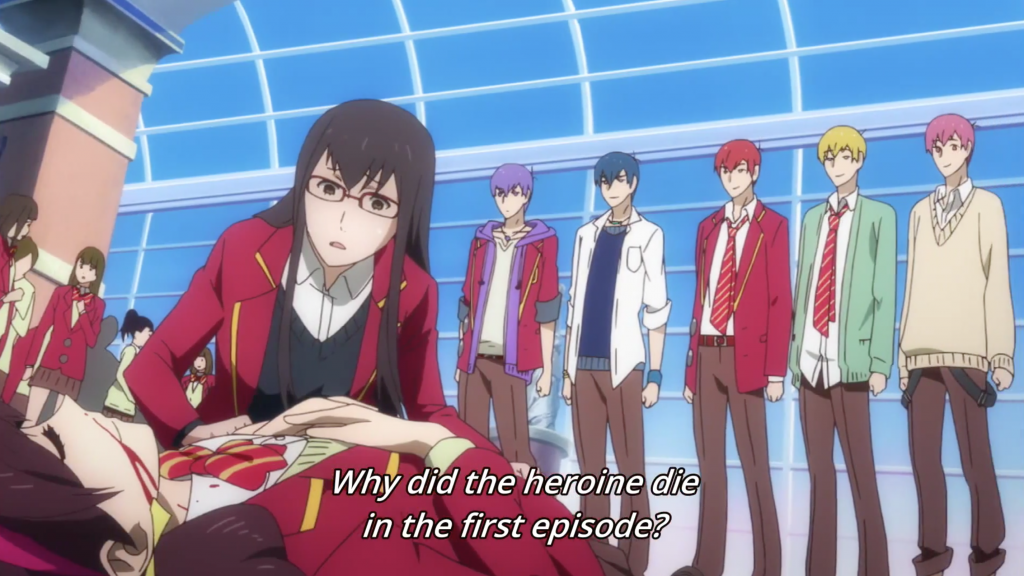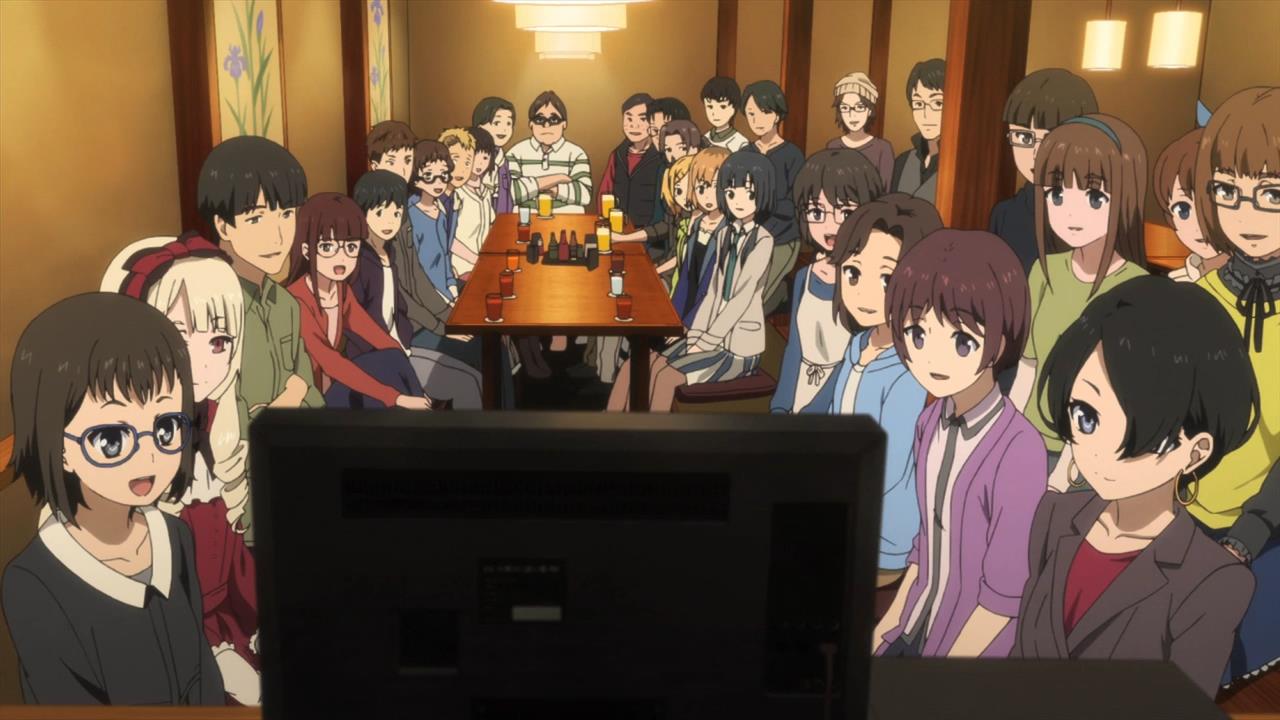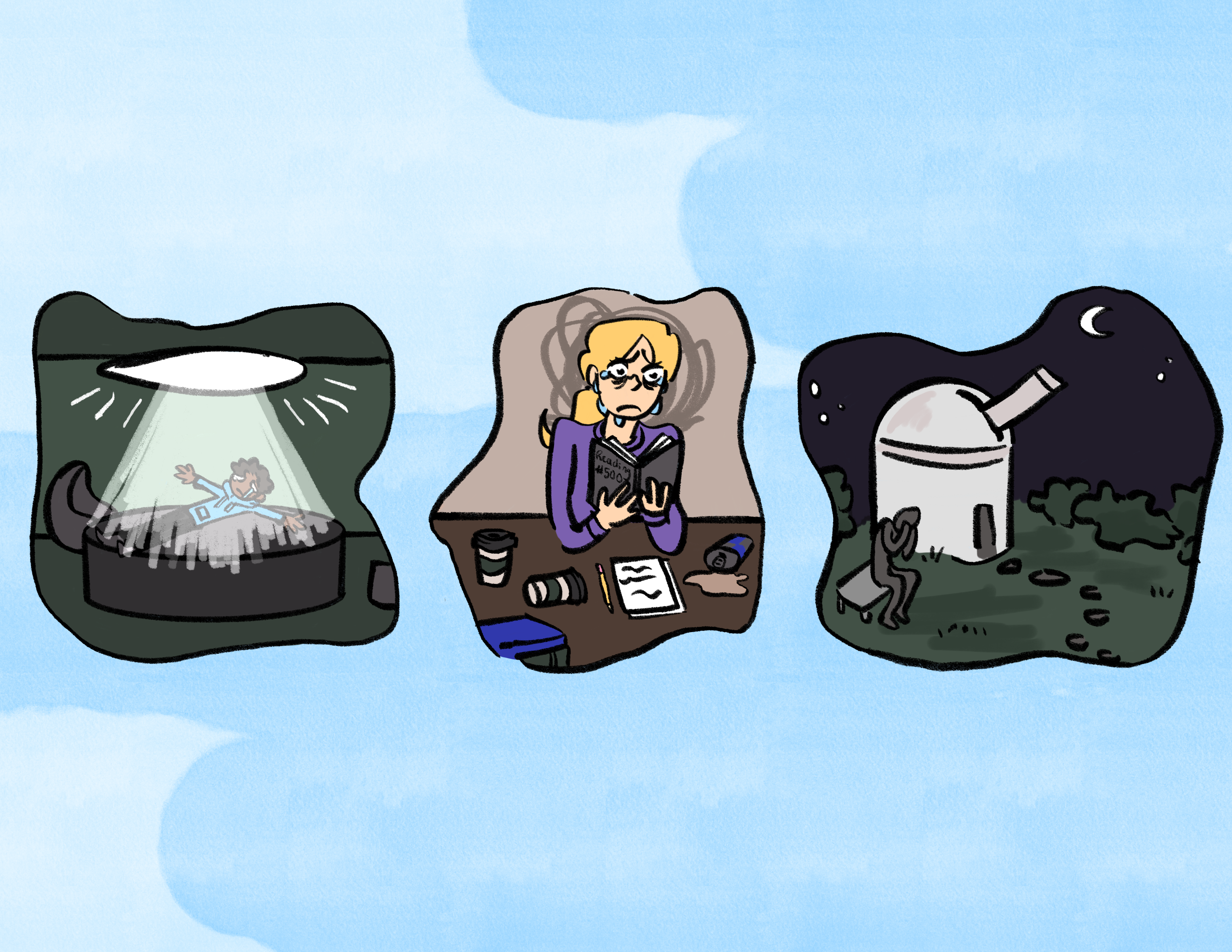Judging from the flood of yellow leaves that have descended upon my backyard (if that is even a valid description of the change in seasons), the fall 2015 anime season has begun (or rather, began four weeks ago), and the offerings are predictable. More high schoolers doing sports, more high schoolers forming boy band groups, more high schoolers saving the world with magic, and so on. Maybe it’s because I might be getting older, but to be honest, not many of them seem all that interesting.
The industry knows this. The first episode of what I think will be this season’s best comedy, Osomatsu-san, is an absurdist but painful demonstration of anime’s most tired tropes. Created to celebrate the manga artist Fujio Akatsuka’s 80th birthday, the protagonists, who are identical sextuplets from the Matsuno family, worry that they are no longer popular because they were created in the 1960s. They transform themselves into bishonen, creating an all-male multicolored pop idol group. Desperate to maintain their popularity, they hold a giant concert, charm a female student at their “School Filled with Bewilderingly-Good-Looking People,” destroy a meteor, join the volleyball and cycling teams, and even destroy a titan. The point is clear: the easy way to make a popular anime today is make even more anime and even more spin-offs based on these canned storylines.

Studio Pierrot
In fact, the bind that the anime industry has found itself in has been has been portrayed in one of my new favorite shows, Shirobako. While the story itself is pretty entertaining, what was more intriguing for me (and probably more scary) was how much everyone had to work in such a competitive industry.
The protagonist, Aoi Miyamori, enters the industry as a production assistant for a small animation study after she and her five friends discover their love for anime in their high school’s animation club, but she begins doubting her passion upon seeing the harsh working conditions. Hundreds of people, from the celebrity to the newbie, audition for the one voiceover role in an anime. The director fights with the publisher over how to adapt a manga for television. The animators themselves work all day hand-drawing all of the key frames for each scene. Aoi has to travel by train all the way from Tokyo to Fukuoka, the very south of the Japanese mainland, to hand-deliver the tape for the final episode of the anime her studio has been producing (in the age of uploading your things onto the cloud!).
Granted, some details are probably dramatized so that the day-to-day details of a job can become a lot more interesting, but the difficulties that the working adults face in Shirobako are grounded in very arduous realities. Animators in real life are paid dismal wages and work impossible hours at the expense of, well, having a life. And as Osomatsu-san shows, animation studios have to conform to bland storylines about high school teenage angst to make it big, along with signing deals with celebrity voice actors and creating expensive, licensed merchandise for diehard fans.
And that’s a shame, because as this occasional column has been trying to show, anime is more than just silly cartoon tie-ins for card games for middle school. It is one of the best ways for an outsider to learn about the realities and problems of Japanese societies, All the ingredients for the next successful anime is there. The question is whether the industry is whether to accept whether we need another show about high school students saving the world, and whether we need to overwork young animators creating these sub-par productions. Until then, there isn’t really much to look forward to in the future of anime.






I have to be honest. I hear stories about the anime industry dying on a regular basis. I agree there are a ton of problems, and a I wish there were more anime about characters old enough to drink. It is far from true though that things are going down hill. The current season feels lack luster, but easily the most popular show of the season is One Punch Man. A series about a 25 year old superhero with killer art and animation, not to mention great comedy and action.
I am already getting excited by new developments like Funimation releasing Dimension W next season. Their first foray into joining anime production committees. (And hey, like One Punch Man, the lead in that is old enough to drink as well!) Similarly, Crunchyroll recently announced they are getting into that game as well. No doubt, they too will fund shows with broader appeal that can gain a worldwide audience.
Things are not good, but they are not bad either. It keeps moving forward. Where it goes next? That is anyone’s guess.